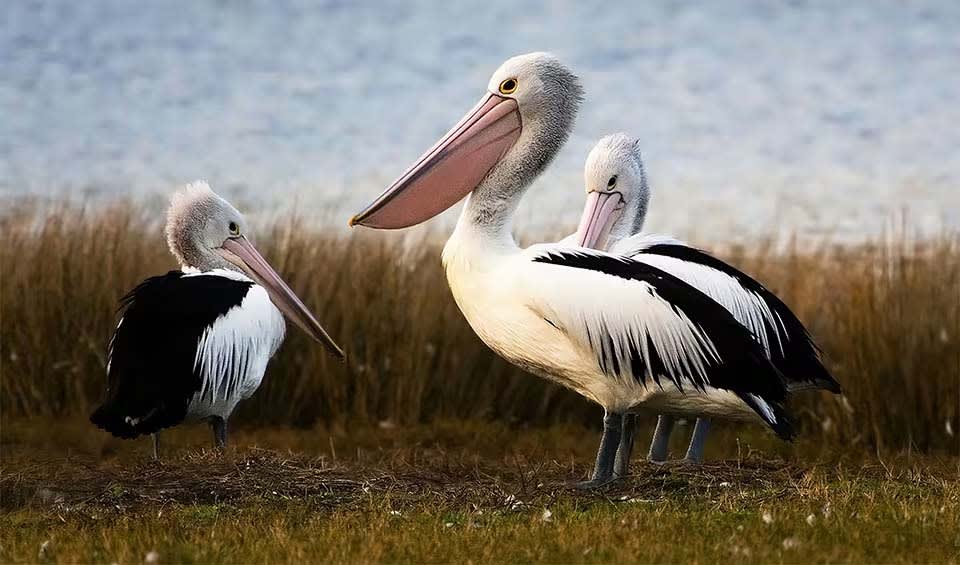An iconic bird species synonymous with Australia’s diverse aquatic landscapes, including Tasmania, and extends its range into parts of New Guinea. Australian Pelicans are among the most easily recognized water birds, renowned for their large size, massive bill, and expansive throat pouch.
These pelicans are highly sociable, frequently seen in flocks that can number in the hundreds, which is a testament to their gregarious nature. They are as much at home in the vast inland lakes and rivers as they are along the coastal waters, estuaries, and swamps. Their preference for open-water habitats that are not overly vegetated allows them easy access to their prey, primarily fish. However, their diet is opportunistic and can include amphibians and sometimes even smaller birds.
Australian Pelicans are well adapted for aquatic life. Their large webbed feet enable them to move smoothly through water, and they use their expansive wingspan, which can reach up to 2.5 meters (8 feet), for efficient flight, including long-distance travel. This capacity for flight is crucial during periods of drought when pelicans may undertake extensive migrations in search of water and food.
One of the most remarkable features of the Australian Pelican is its bill, the longest of any bird, which can measure up to 0.5 meters (18 inches) in length. The bill is not only a tool for catching fish but also serves as a means of thermoregulation, with blood vessels expanding or contracting to release or retain heat.
Distribution
 Australia
Australia East Timor
East Timor Fiji
Fiji Indonesia
Indonesia Nauru
Nauru New Caledonia
New Caledonia New Zealand
New Zealand Palau
Palau Papua New Guinea
Papua New Guinea Solomon Islands
Solomon Islands Vanuatu
VanuatuAnything we've missed?
Help us improve this page by suggesting edits. Glory never dies!
Suggest an editGet to know me
Terrestrial / Aquatic
Altricial / Precocial
Polygamous / Monogamous
Dimorphic (size) / Monomorphic
Active: Diurnal / Nocturnal
Social behavior: Solitary / Pack / Herd / Flock
Diet: Carnivore / Herbivore / Omnivore / Piscivorous / Insectivore
Migratory: Yes / No
Domesticated: Yes / No
Dangerous: Yes / No





